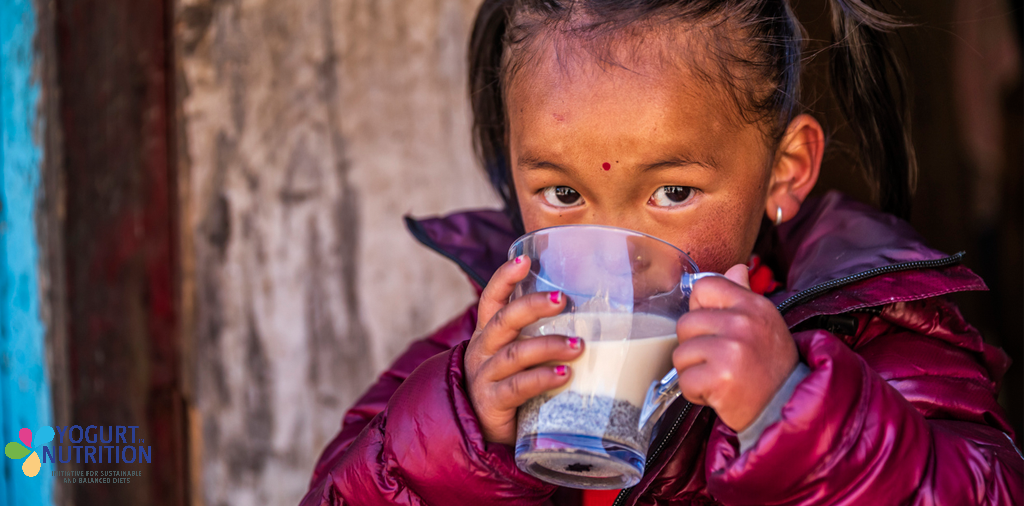Dairy foods have a role to play in tackling undernutrition in children around the world, according to an expert in international food policy (1).
Dairy foods have properties that make them almost ideal for giving youngsters a good nutritional start in life (2,3), and they’re available in most parts of the world. Yet dairy consumption remains variable across developing countries and is often very low.
Determining to find out why, researcher and economist Dr Headey (International Food Policy Research Institute in Colombo, Sri Lanka) has explored the barriers to dairy consumption in developing countries (1). The biggest, but not the only reason is that many families in these regions struggle to afford milk and other dairy products.
Poor nutrition remains at crisis point in some developing countries
Many young children in low- and middle-income countries (LMICs) miss out on vital nutrients that support healthy growth and development. To make matters worse, youngsters in these countries may suffer repeated and long-term gut infections, which can interfere with their ability to absorb nutrients from their food (1).
The outlook for such youngsters can be bleak. They may face lifelong consequences, including poor health and missed education; they can even expect to earn less than others when they grow up.
The pressure is on to develop nutrition-smart agriculture that may give a healthy boost to diets very early in life. Experts are looking to the dairy sector, which they say has the potential to benefit young children’s nutrition.
Understanding barriers to dairy consumption will therefore be important and the data on dairy consumption and economic factors from over 100,000 young children living in 59 developing countries was analysed.
Childhood consumption of dairy foods varies widely across the developing world
The analysis showed that most young children in Latin America, Europe, Central Asia, the Middle East, and North Africa eat dairy foods daily. In South Asia this is true for around half of children, but far fewer children eat dairy foods daily in South-East Asia and Central, Southern, West, and Eastern Africa.
Looking more closely at the figures revealed huge variations in dairy consumption among children within these regions. For example, in Eastern Africa, nearly 60% of children eat dairy foods daily in Kenya, compared with under 20% in Rwanda and just 5.6% in Burundi.
Differences in wealth largely explain variations in childhood dairy consumption
The research showed that, across developing countries, household wealth is the strongest predictor of dairy food consumption among young children. Children in richer families eat much more dairy food than those in poorer families; this difference is greater than for foods such as meat and eggs.
These results are supported by other economic studies on the demand for dairy foods across Africa, which suggest that dairy consumption rises sharply with household income (4).
How do milk prices affect childhood dairy consumption?
The research revealed widespread regional differences in the prices of fresh and long-life milk, compared with the cheapest staple food available in each country.
Fresh milk is most expensive in sub-Saharan Africa and South-East Asia, costing a whopping 12 to 20 times more per calorie than the cheapest cereal. In contrast, long-life milk is a cheaper option, although more expensive in sub-Saharan Africa than other regions.
Higher prices of milk are associated with lower levels of dairy food consumption among children across developing countries. In general, variation in dairy food consumption seems to be more sensitive to the price of fresh milk than to that of long-life milk(1).
What other factors can drive childhood dairy consumption?
Several other economic factors influence children’s dairy food consumption, the research showed:
Refrigeration
- Differences in household access to refrigeration may influence demand for fresh milk
- Owning a fridge is significantly associated with increased dairy food consumption in most regions
Water quality
- Milk powder is used widely in countries that do not produce large amounts of fresh milk, but needs to be made up with clean water
- The research suggests that access to clean piped water is associated with increased dairy food consumption in regions where use of powdered milk is relatively high compared to fresh milk
Dairy cattle
- Previous studies have shown that rural households may be more dependent on local milk supplies than marketed dairy products. For example, 90% of milk consumed by households in rural Ethiopia is locally produced (5)
- Researchers suggest that local milk supplies are important in Eastern African countries where cattle ownership is high, but dairy processing and marketing is less developed than in other regions
Policymakers should act to encourage dairy consumption
This research suggests that promoting dairy consumption could be an important tool in addressing the malnutrition crisis in LMICs and it calls on policymakers to consider a range of strategies to help make dairy consumption more affordable and accessible for families in these regions.
Dr Headey suggests a focus on policies and investments that add value to local dairy food production and distribution, as well as setting up educational campaigns to raise people’s awareness about healthy nutrition.
Dairy foods for growing kids
Dairy foods have long been recognised as a valuable source of nutrition:
- They’re source of high-quality proteins that are the building blocks of growth and cognitive development (2).
- Dairy contains essential vitamins and minerals, including calcium needed for healthy bone growth.
- The high nutrient density of dairy foods means they’re an excellent choice for small stomachs.
In fact, studies have linked eating dairy food with faster growth during early childhood (3).
’Dairy is a high-potential food for addressing child malnutrition in low- and middle-income countries (LMICs), but consumption varies greatly across LMICs.’ – Headey D, 2023



